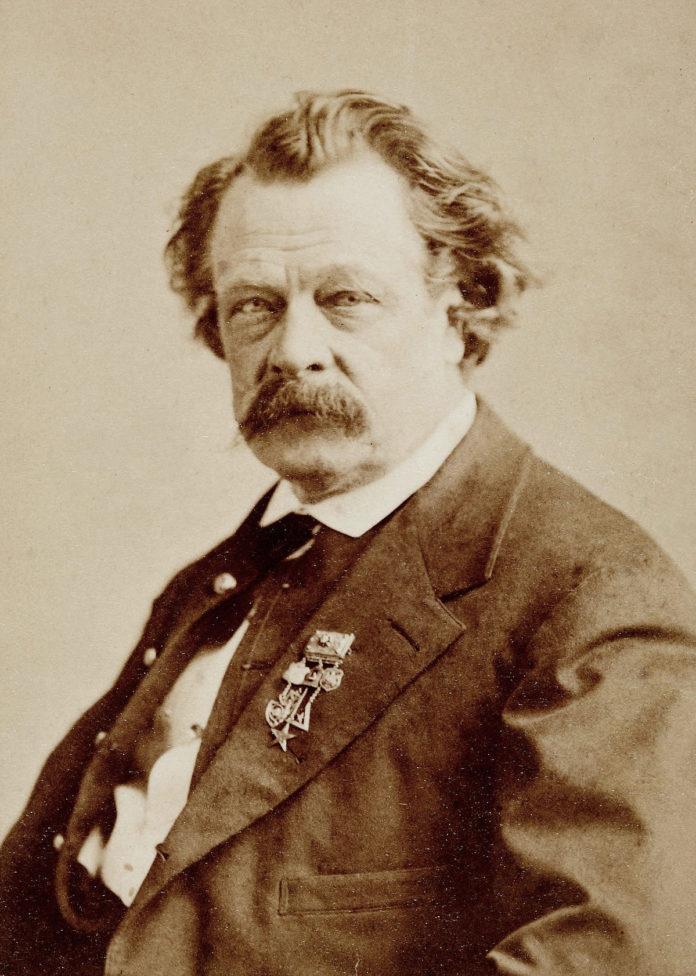A story republished in “The Jackson Standard” on April 22, 1858 is one of the oldest on record that addresses a pirate named Black Caesar, who ruled the Florida Reef from an Elliott Key lair. The account appeared in the story, “Jack Weatherwax: The Wrecker of Caesar’s Creek, A Tale Of The Florida Reef in the Olden Time.” The byline read Ned Buntline.
Buntline was a popular storyteller, one of the most popular in the 19th century. He was also one of the most commercially successful writers of his time. A contemporary of Samuel Clemens, more easily recognizable by his pen name, Mark Twain, Buntline was a prolific writer who penned as many as 400 dime novels. Dime novels were inexpensive melodramatic adventures published in paperback between the 1850s and 1920s.
Like the name Mark Twain, Ned Buntline was a nom de plume. On March 20, 1821, in the small New York village of Stamford, he was born Edward Zane Carroll Judson. As a boy, he yearned to experience adventure or, at the very least, to write about it. When he was a teenager, he ran off and joined the U.S. Navy and served during the second escalation of the Seminole War (1835-1842). For a time, he served as a midshipman aboard the Ostego. The Ostego patrolled the Florida Keys and was in the area when Indians attacked Indian Key on August 7, 1840. It proved to be the southernmost attack during the Seminole War.
Judson resigned from the military in 1842. He would go on to pursue his writing and publishing career. While Judson is most remembered for writing as Ned Buntline, and Buntline might be best remembered for bringing to print the Wild West antics that made William “Buffalo Bill” Cody world-famous, he also did a little writing about pirates, Indian Key and the Florida Keys.
In 1847, Buntline penned two pirate novels. The first was “The Black Avenger of the Spanish Main: Or, the Fiend of Blood.” The story had a Black Caesaresque theme and was about a servant who eloped with his master’s daughter and turned to a life of piracy. The second was “The Red Revenger: Or, the Pirate King of the Floridas.” In Buntline’s opening, he writes, “Off the island of Matecumba, distant perchance a mile from the reef, lay a vessel becalmed, which in her appearance was so strange that we must describe her.”
Buntline’s story, “Jack Weatherwax: The Wrecker of Caesar’s Creek, A Tale Of The Florida Reef in the Olden Times,” includes a story about Black Caesar. Though the story tells the tragic tale of the wrecker Weatherwax, Buntline also detailed why the creek flowing between Old Rhodes and Elliott keys was named: “…Black Caesar’s Creek because it was formerly the hiding place and rendezvous of a noted pirate known as Black Caesar, who was destroyed, and his gang broken up by Commodore Porter’s expedition, in 1822 or 3—perhaps by the same gallant ‘Old Plug,’ of whom I spoke in the Mercury not long since. It is a dark and crooked lane of water, leading to the inner bay, shaded by shelter on either side by high mangroves, and afforded an excellent hiding place for the pirates, who cold suddenly dart out upon the merchant vessels passing up or down the Gulf Stream. Ah, were but all the records of the deeds done by those who once lurked there written, what a thrilling book of horrors that would make! One’s soul shudders to think of the murderous acts performed by the black-hearted pirates, whose motto was – – ‘Dead men tell no tales,’ and who only spared young and beautiful maidens, who fell into their hands, for sufferings worse a thousand times than death!”
According to Buntline, Black Caesar’s Creek was named after his version of Black Caesar. He would have certainly heard about the creek during his time serving aboard the Ostego. Being a military man, he would have heard the stories of Commodore Porter and how his squadron basically wiped the West Indies clean of much of the piratical threat faced by merchant ships.
However, Buntline’s account of Black Caesar and of how Black Caesar’s Creek came to be named is not supported by the records of those authorities he claims to have struck the alleged pirate down. Also, by the time Buntline says Porter took care of the pirate, the creek had already been given its peculiar name. Bernard Romans named the creek in his “Maps of East and West Florida,” published in 1775.
While Buntline did not fully understand the local history, he did do a fine job of being a professional spinner of yarns.





















